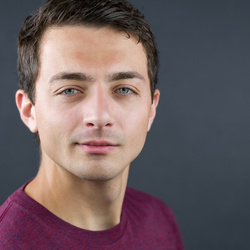If you’re considering the Canon R5 Mark II, you’re probably asking yourself how it measures up in real-world use, particularly with its new sensor. This review takes a close look.
Coming to you from Jared Polin, this detailed video dives into the raw performance of the Canon EOS R5 Mark II. Polin walks through real-world shooting situations, comparing the R5 Mark II with the original R5, Nikon Z8, and Sony a1. One of the key differences with the R5 Mark II is the ability to shoot 14-bit raw files, whether using the electronic or mechanical shutter, which was previously limited to 12-bit on the original R5 when using the electronic shutter. This feature alone makes a significant difference in image quality, especially when dealing with high-contrast scenes or when pulling details from shadows and highlights.
The video covers various shooting scenarios, including outdoor portraits, sports events, and low-light conditions. Polin highlights how the R5 Mark II's autofocus system manages to lock onto subjects even in challenging environments, such as a soccer game where a line might run across the subject’s face. The camera’s ability to track and maintain focus in these situations showcases its improved performance over the original R5. Moreover, Polin notes the differences in color rendition and sharpness between the two models, with the Mark II offering slightly better results, particularly in skin tones and overall image clarity.
Low-light performance is another area where the R5 Mark II shines. Polin pushes the ISO to 6400 in various conditions, noting that the noise levels are impressively controlled. Even when shooting in less-than-ideal lighting, the images maintain a good balance of sharpness and detail. He also discusses the limits of pushing ISO to extremes like 25,600, where image quality tends to degrade, and advises staying within more reasonable ISO ranges for the best results.
In addition to the real-world examples, Polin conducts studio tests to compare the R5 Mark II against other high-megapixel cameras. These tests reveal subtle differences in dynamic range, color accuracy, and sharpness, with the Mark II generally holding its own or outperforming the original R5 in these controlled environments. While some critics have pointed out a potential half-stop loss in dynamic range with the Mark II, Polin argues that these differences are negligible in practical use.
If you're on the fence about upgrading to the Canon R5 Mark II, this video provides valuable insights into its real-world performance. Check out the video above for the full rundown from Polin.






